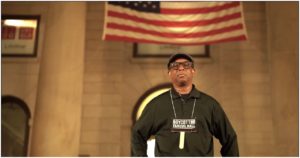Introduction: When the Silver Screen Met the Spin of Fortune
For over a century, Hollywood has been more than just a factory for dreams—it’s been a mirror reflecting our desires, aspirations, and vices. Among the many worlds it has glamorized, few shimmer as brightly as the casino floor. Movies have long transformed gambling from a smoky pastime into a dazzling experience of lights, tuxedos, champagne, and chance. Whether it’s the suave demeanor of James Bond at the baccarat table or the frenetic energy of Las Vegas in Casino, Hollywood’s storytelling has profoundly shaped how audiences perceive casinos—not as mere venues for risk but as stages for drama, power, and luxury.
The allure of the casino on screen is universal. It doesn’t matter if you’re in Monaco, Macau, or Melbourne; the imagery of roulette wheels spinning under golden chandeliers triggers an instant sense of fascination. And nowhere is this fascination more deeply rooted than in the collective imagination sculpted by Hollywood’s finest filmmakers.
The Birth of Casino Glamour on Film
In the early days of cinema, gambling scenes were often set in smoky saloons or shadowy dens of iniquity. The poker games in early Westerns like The Great Train Robbery (1903) depicted the casino world as gritty and masculine—a place of danger and deceit. But as Hollywood evolved, so did its portrayal of gambling. The 1950s and 1960s ushered in a new era of style and sophistication.
Films such as Ocean’s 11 (1960), starring Frank Sinatra and the Rat Pack, recast the casino as a glamorous playground for the rich and daring. Suddenly, gambling wasn’t about outlaws and bandits—it was about tuxedos, cocktails, and confidence. This cinematic reinvention directly influenced global audiences, making casinos synonymous with elegance and excitement.
Today, when people search for australia online casino sites, they’re often inspired by that same Hollywood fantasy—the idea that casino gaming isn’t just about luck, but about stepping into a world of luxury and thrill. The modern digital player still imagines the click of virtual chips echoing like dice on velvet tables in Monte Carlo or Vegas, thanks to decades of cinematic influence.
The Bond Effect: Elegance, Espionage, and the Baccarat Table
No discussion about casino glamour is complete without mentioning James Bond. From Dr. No (1962) to Casino Royale (2006), the iconic secret agent has turned casino gaming into an art form. The Bond franchise doesn’t just feature gambling scenes—it defines them.
When Sean Connery introduced himself with the immortal line, “Bond, James Bond,” over a game of chemin de fer, Hollywood forever fused espionage with elegance. Every Bond casino scene is meticulously designed: tuxedos, martinis, slow jazz, and high stakes. These moments didn’t just popularize gambling—they romanticized it. They turned a simple card game into a cinematic ballet of tension, intellect, and charm.
The result? Millions of viewers worldwide began to associate the casino with sophistication, confidence, and allure. Casinos were no longer just destinations; they were aspirational experiences. The Bond formula transformed gambling into a lifestyle statement.
Vegas on the Big Screen: The City That Became a Character
If James Bond made the casino classy, Las Vegas made it larger than life. Hollywood’s obsession with “Sin City” began in the mid-20th century, when directors realized that Vegas wasn’t just a location—it was a living, breathing spectacle.
Movies like Viva Las Vegas (1964) with Elvis Presley celebrated the city’s neon nightlife, while Martin Scorsese’s Casino (1995) peeled back the velvet curtain to expose the grit beneath the glitter. Each depiction, whether romanticized or raw, added new dimensions to the public’s perception of casino culture.
Vegas became the embodiment of risk and reward—the American dream on steroids. Audiences worldwide fell in love with the promise of reinvention that came with every spin of the wheel or pull of a slot lever.
Even as online gaming grew in popularity, the imagery of Vegas—its lights, energy, and magnetic allure—remained central to how casinos were marketed and imagined. Many online platforms still model their themes and visuals after iconic Hollywood versions of Vegas, complete with glimmering lights, red carpets, and star-studded luxury.
The Ocean’s Influence: Glamour Meets Strategy
When Steven Soderbergh rebooted Ocean’s Eleven in 2001, he redefined the modern casino heist movie. Gone were the rough edges of old crime thrillers. In their place: designer suits, witty banter, and an ensemble of charming rogues led by George Clooney and Brad Pitt.
The film and its sequels turned casino life into a high-stakes chess game played by the world’s most stylish criminals. It wasn’t just about stealing money; it was about outsmarting the system with finesse. Audiences were captivated not only by the glamour but by the precision and intellect behind the games and cons.
Once again, Hollywood reinforced the notion that casinos were not just places of chance but arenas of intelligence and charisma. The blend of strategy, fashion, and opulence became part of the modern gambling mythos that still drives both land-based and digital casino marketing today.
Casino Fashion: Dressing the Part of Luck
One of Hollywood’s most enduring contributions to casino culture is its influence on fashion. Films consistently present casino-goers as icons of style—men in tailored tuxedos, women in sequined gowns, all exuding effortless confidence.
This aesthetic did more than create movie magic; it established a real-world dress code for luxury. Even today, when players enter a high-end casino—or log into premium gaming sites—they subconsciously channel that cinematic polish. From the shine of a cufflink to the gloss of red lipstick, Hollywood’s casino imagery shaped what it means to “dress for luck.”
Beyond mere fashion, this glamorization fostered an emotional link between appearance and performance. If you look like a winner, perhaps you play like one too—a belief system born and bred in Hollywood’s storytelling halls.
The Psychology of Casino Glamour
Why does Hollywood’s portrayal of casinos captivate us so deeply? It’s because these films tap into universal human emotions: the thrill of risk, the seduction of wealth, and the fantasy of control.
In movies, the casino floor isn’t just a setting—it’s a metaphor for life. Every bet represents a choice, every spin of the wheel a chance at reinvention. Characters like Sam “Ace” Rothstein in Casino or Molly Bloom in Molly’s Game embody our fascination with mastery, luck, and power.
Hollywood’s genius lies in making these abstract ideas tangible. It takes the mathematical coldness of gambling and dresses it in velvet, champagne, and cinematic tension. As viewers, we’re not just watching people gamble; we’re watching them chase meaning through risk—a concept that’s profoundly human.
From Physical Tables to Digital Screens
As gambling technology evolved, so did Hollywood’s portrayal of it. Films like 21 (2008) and Rounders (1998) introduced audiences to the intellect behind card games, blending real strategy with cinematic thrill. More recent depictions even nod toward digital betting, cryptocurrency, and online poker tournaments—demonstrating how modern gaming culture mirrors the digital transformation of the entertainment world.
Just as Hollywood adapted to streaming platforms, the casino industry evolved toward online platforms that capture the same thrill from the comfort of home. This convergence of cinema and digital gaming keeps the spirit of Hollywood glamour alive—even on a smartphone screen.
Cinematic Storytelling and Brand Marketing
Casinos and movies share one key goal: creating immersion. Whether you’re watching a high-stakes poker scene or sitting at a digital blackjack table, the thrill comes from narrative. The same storytelling techniques that make movies compelling—suspense, reward, character arcs—are now used by casino brands to engage audiences.
Modern casino marketing borrows heavily from Hollywood playbooks. Trailers, dramatic music, cliffhanger visuals, and emotional triggers—all are tools once exclusive to cinema, now woven into the user experience of gaming platforms. The result is a seamless bridge between entertainment and engagement.
Hollywood’s Impact on Casino Tourism
The influence of Hollywood extends beyond imagination; it drives real-world tourism. Movies like The Hangover (2009) didn’t just entertain audiences—they boosted travel to Las Vegas. Visitors wanted to relive the wild adventures they saw on screen, walk the same casino floors, and feel that same cinematic rush.
This crossover effect isn’t limited to the U.S. In places like Australia and Macau, film-inspired tourism has surged alongside casino development. People don’t just want to gamble—they want to experience the movie-like thrill of it. Hollywood, in essence, turned casinos into global destinations for adventure and aspiration.
When the Cameras Stop Rolling
Behind the glitter, Hollywood also explores the darker sides of gambling—addiction, deceit, and loss. Films like The Gambler and Uncut Gems delve into the psychological chaos beneath the surface glamour. These portrayals balance the fantasy, reminding audiences that while casinos can symbolize excitement, they can also mirror obsession.
By showing both extremes—the ecstasy of winning and the despair of losing—Hollywood humanizes the gambling experience. This emotional duality makes casino films timeless: they celebrate the dream but caution the dreamer.
The Future: Streaming, Storytelling, and Digital Glamour
In the age of streaming, casino-themed content continues to thrive. Series like Ozark and Queen of Vegas reimagine the casino setting for modern audiences, blending crime, business, and digital innovation. Platforms like medium.com even host think pieces exploring how pop culture and technology reshape our gambling narratives.
As entertainment shifts toward digital storytelling, the glamour of the casino remains undiminished. Instead of fading, it’s adapting—finding new life in online gaming visuals, influencer marketing, and cinematic advertising. Hollywood may have lit the first spark, but today’s creators are keeping the flame alive in every digital spin and live-streamed poker face.
The Legacy of Lights, Luck, and Storytelling
Hollywood didn’t just romanticize casinos—it redefined them. It took something grounded in probability and transformed it into poetry. Through decades of storytelling, cinema taught us that casinos are more than places to gamble—they are spaces where dreams are tested, identities are built, and destinies are rewritten under golden chandeliers.
From Sinatra’s swagger in Ocean’s 11 to Daniel Craig’s icy stare in Casino Royale, every film has added another layer to our collective love affair with casino glamour. And even as technology shifts our gaming habits from tables to screens, that Hollywood sparkle remains the same—a timeless reminder that luck, style, and storytelling will always make the perfect bet.
Conclusion: Why Hollywood’s Casino Dream Endures
Hollywood shaped our fascination with casinos not just through visuals but through emotion. It connected luxury with risk, power with play, and fantasy with reality. The cinematic image of a player pushing chips across a velvet table isn’t merely entertainment—it’s a reflection of our shared desire for possibility.
In every spin, every card dealt, and every cinematic close-up of a confident smile, we see ourselves: dreamers in search of a little luck and a lot of glamour. Whether on film reels, digital screens, or australia online casino sites, that story continues to unfold—sparkling, seductive, and endlessly cinematic.






